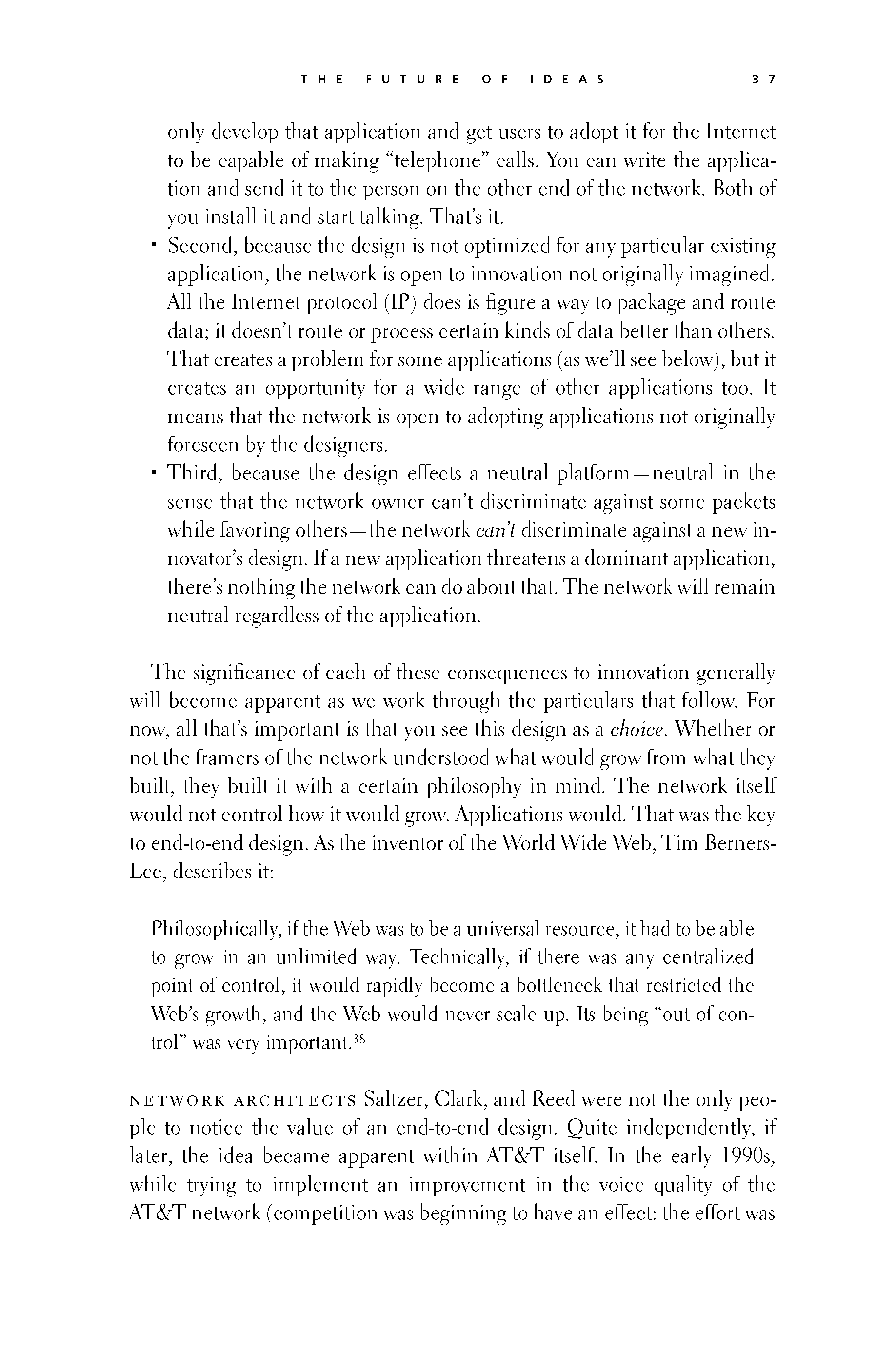 p036 _
-chap- _
toc-1 _
p037w _
toc-2 _
+chap+ _
p038
p036 _
-chap- _
toc-1 _
p037w _
toc-2 _
+chap+ _
p038
____ only develop that application and get users to adopt it for the Internet
____ to be capable of making "telephone" calls. You can write the applica-
____ tion and send it to the person on the other end of the network. Both of
____ you install it and start talking. That's it.
____ * Second, because the design is not optimized for any particular existing
____ application, the network is open to innovation not originally imagined.
____ All the Internet protocol (IP) does is figure a way to package and route
____ data; it doesn't route or process certain kinds of data better than others.
____ That creates a problem for some applications (as we'll see below), but it
____ creates an opportunity for a wide range of other applications too. It
____ means that the network is open to adopting applications not originally
____ foreseen by the designers.
____ * Third, because the design effects a neutral platform -- neutral in the
____ sense that the network owner can't discriminate against some packets
____ while favoring others -- the network _can't_ discriminate against a new in-
____ novator's design. If a new application threatens a dominant application,
____ there's nothing the network can do about that. The network will remain
____ neutral regardless of the application.
The significance of each of these consequences to innovation generally
will become apparent as we work through the particulars that follow. For
now, all that's important is that you see this design as a _choice_. Whether or
not the framers of the network understood what would grow from what they
built, they built it with a certain philosophy in mind. The network itself
would not control how it would grow. Applications would. That was the key
to end-to-end design. As the inventor of the World Wide Web, Tim Berners-
Lee, describes it:
____ Philosophically, if the Web was to be a universal resource, it had to be able
____ to grow in an unlimited way. Technically, if there was any centralized
____ point of control, it would rapidly become a bottleneck that restricted the
____ Web's growth, and the Web would never scale up. Its being "out of con-
____ trol" was very important.[3-38]
///\\\
Network architects Saltzer, Clark, and Reed were not the only peo-
ple to notice the value of an end-to-end design. Quite independently, if
later, the idea became apparent within AT&T itself. In the early 1990s,
while trying to implement an improvement in the voice quality of the
AT&T network (competition was beginning to have an effect: the effort was
[[37]]
p036 _
-chap- _
toc-1 _
p037w _
toc-2 _
+chap+ _
p038